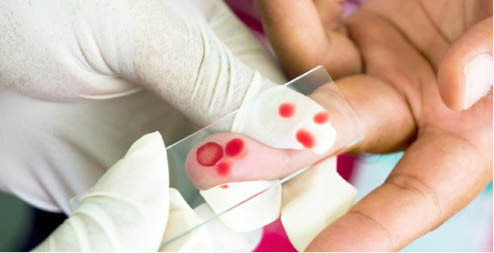Tracking cholera in a drop of your blood
A new study has developed a novel method to identify individuals recently infected with cholera—looking for markers that indicate a person has been recently infected. The method looks for six markers identified in the blood of cholera patients—and the tracking has achieved a 93% accuracy. While efforts struggle to provide safe water and sanitation, cholera […]

A new study has developed a novel method to identify individuals recently infected with cholera—looking for markers that indicate a person has been recently infected.
The method looks for six markers identified in the blood of cholera patients—and the tracking has achieved a 93% accuracy.
While efforts struggle to provide safe water and sanitation, cholera continues to kill more than 100,000 people every year. The World Health Organisation’s Global Task Force for Cholera Control has set a goal to eliminate cholera as a public health threat by 2030.
But there is still “no good method to figure out who has had cholera and who hasn’t,” said Daniel Leung, an assistant professor in the Division of Infectious Diseases at University of Utah Health and co-author on the study.
“Establishing a serosurveillance method overcomes many of the shortcomings of traditional surveillance approaches by providing a new way to track the spread of cholera in short-term outbreaks as well as assess long-term burden of cholera across different populations.”
Surveillance for cholera is based on mostly clinical reporting of watery diarrhoea; few cases are confirmed by laboratory testing.
Not all patients ill with cholera develop severe symptoms like diarrhea, nausea, vomiting and dehydration.
Many do not seek medical care and would not be counted in traditional surveillance.
Infected persons, even without symptoms, continue to shed the bacteria for up to a week after infection, passing the disease to other others, typically through contaminated water.
The research team analyzed more than 1,569 blood samples obtained from cholera patients, who received care in a Dhaka, Bangladesh hospital, and their uninfected household members between December 2006 and December 2015.
The concentration of the six markers at the heart of the method rises during the first two weeks of infection, and then begin to slowly wane over time. One marker, an antibody against the cholera bacteria, most predictably indicates a recent infection.
To validate their method, the researchers also tested North Americans who volunteered to be infected with cholera. It is currently being tested in Haiti.
“Our work shows that a drop of blood likely contains enough information to tell if someone was infected with the bacteria in the past year,” said Andrew Azman, Ph.D., assistant scientist in Epidemiology at Johns Hopkins Bloomberg School of Public Health and lead author on the study.
“It gives us another way to track cholera without having to fully rely on clinical data from the less than ideal health surveillance systems often available in cholera-affected countries.”
When testing the method, the researchers conducted simulations of cholera transmission and were able to estimate the number of infections in hypothetical settings where cholera is common, and regions where it is episodic. These results help illustrate how this approach can be put to use in public health practice.
The results of the study are published in the journal Science Translational Medicine.
